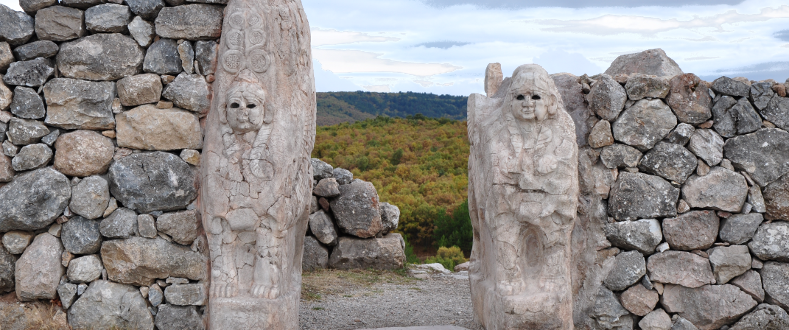The Rediscovery of the Hittites
Since the Bible and classical authors preserved the names and events of the ancient Near Eastern cultures, the Babylonians, Assyrians and Egyptians were never completely forgotten. Quite different was the situation with the Hittites: By the time of Herodotus, they had already been forgotten and their visible monuments were attributed to other civilizations.
Everything that we know today about the history and culture of the Hittites is due to the research of the last two centuries.
The Relief at Karabel
The Greek historian Herodotus, traditionally known as the pater historiae, “father of history” (according to Cicero), tells of the customs and manners of the Egyptians and the deeds of their rulers in Book 2. The king Sesostris, who, as we now know, belonged to the 12th Dynasty and can be dated to the 19th century BC, played a very prominent role therein. Following Herodotus, this king undertook extensive conquests, in the course of which he left behind monuments of his victories. Among them, one stands in western Asia Minor on the road from Sardis to Smyrna, modern-day Izmir. Herodotus described the relief as follows:
ἑκατέρωθι δὲ ἀνὴρ ἐγγέγλυπται μέγαθος πέμπτης σπιθαμῆς, τῇ μὲν δεξιῇ χειρὶ ἔχων αἰχμὴν τῇ δὲ ἀριστερῇ τόξα, καὶ τὴν ἄλλην σκευὴν ὡσαύτως: καὶ γὰρ Αἰγυπτίην καὶ Αἰθιοπίδα ἔχει: ἐκ δὲ τοῦ ὤμου ἐς τὸν ἕτερον ὦμον διὰ τῶν στηθέων γράμματα ἱρὰ Αἰγύπτια διήκει ἐγκεκολαμμένα, λέγοντα τάδε: ‘ἐγὼ τήνδε τὴν χώρην ὤμοισι τοῖσι ἐμοῖσι ἐκτησάμην.
“In both places, the figure is over twenty feet high, with a spear in his right hand and a bow in his left, and the rest of his equipment proportional; for it is both Egyptian and Ethiopian; and right across the breast from one shoulder to the other a text is cut in the Egyptian sacred characters, saying: ‘I myself won this land with the strength of my shoulders.’” (translation: A. D. Godley, ed. at http://www.perseus.tufts.edu)
The relief which Herodotus describes still exists today. It was (re)discovered in 1839 by a research expedition and made known to the scholarly world in the same year.
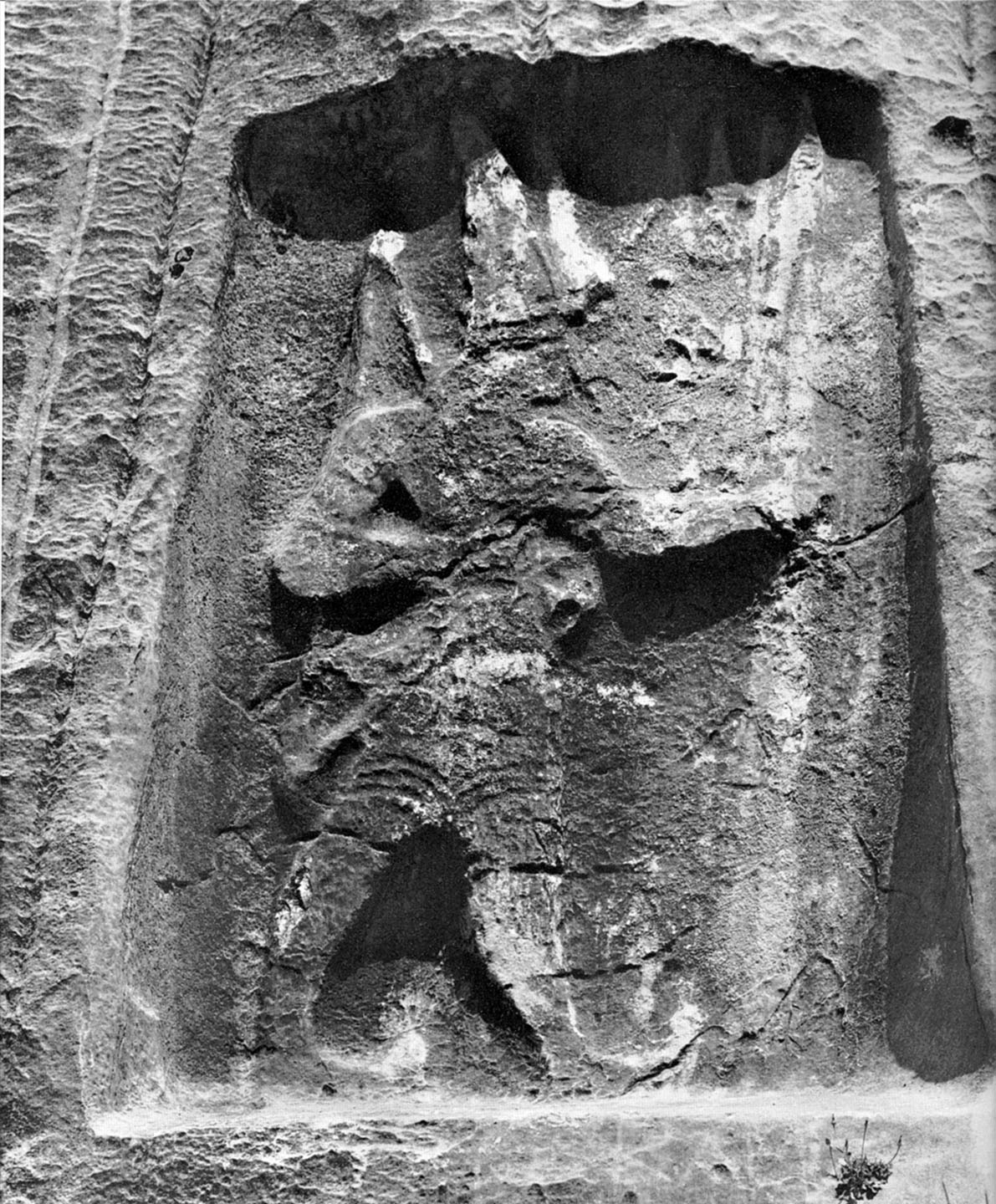
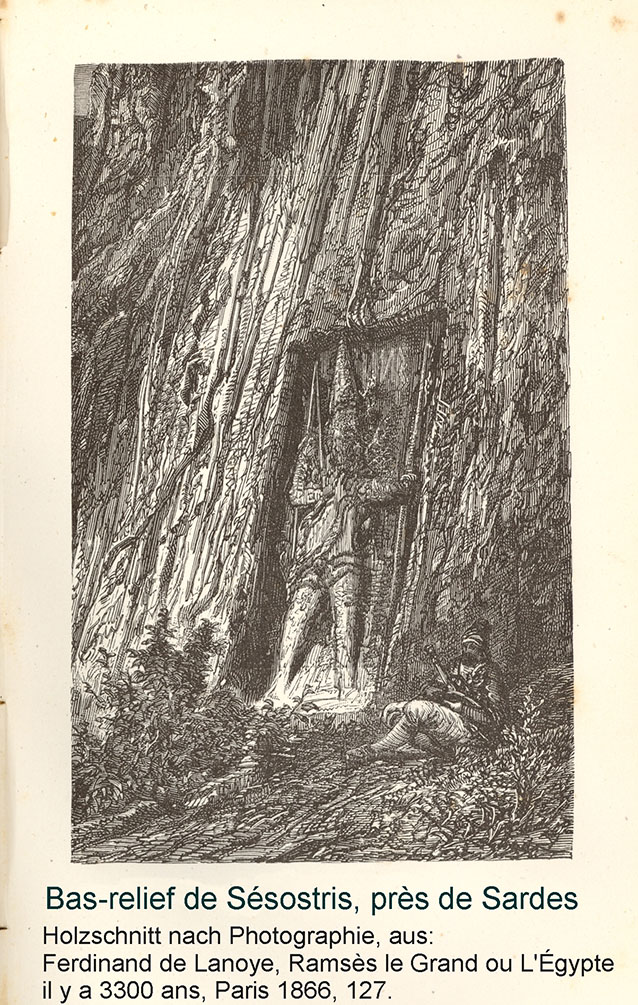
The inscription, however, is not written in Egyptian but rather in Hittite hieroglyphs, and it was only deciphered a few years ago.
The “Tarkondemos Seal”
In 1998 the English Hittitologist and specialist for Hittite hieroglyphs, David Hawkins, published his readings of the inscription in the journal Anatolian Studies. It was thereby recognized that the relief as well as an inscribed silver seal, known since the 19th century and erroneously attributed to an ancient ruler named Tarkondemos, both stem from Tarkasnawa, a king of the western Anatolian land of Mira.
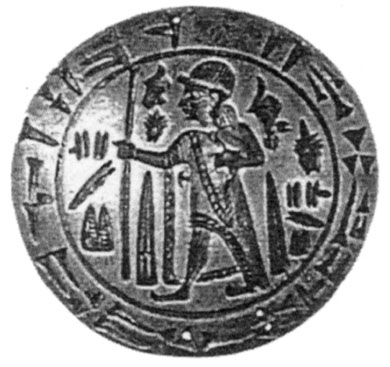
This case demonstrates that the history and culture of the Hittites were already forgotten in antiquity. When the empire of the Hittite great kings collapsed shortly after 1200 BC, and their capital city of Hattuša was abandoned and ultimately destroyed, every remembrance of them disappeared as well.
The investigation of ancient Anatolia stands in connection with the investigation of the pre-Hellenistic cultures of Western Asia and Egypt which revolutionized the understanding of the history of antiquity in the 19th century. Up to that point in time, everything which was known or thought to be known about ancient Western Asia and Egypt could be traced back to two text corpora, namely the ‘classical’ works, that is, the Greek and Latin texts, and the Biblical tradition.
These sources provided an abundance of information about the Assyrians, Babylonians and Egyptians, which was actually quite substantial and detailed for the 1st millennium BC. The situation is quite different with regard to the 2nd millennium. As Herodotus’ description of the Karabel relief demonstrates, the Greeks knew nothing anymore of the Hittites.
The Ḥittîm of the Bible
However, the Old Testament does refer to the people of the Ḥittîm, whose name Martin Luther translated as Hethiter (“Hittites”). The Hittites are mentioned in the Old Testament alongside other peoples, such as the Amorites and Canaanites, whom the Israelites found upon their entry into the promised land. According to Genesis 23, Abraham purchased a cave by Hebron from a Hittite as a burial place, and Esau married two Hittite women according to Genesis 26.
וַיִּשְׁלַח דָּוִד, וַיִּדְרֹשׁ לָאִשָּׁה; וַיֹּאמֶר, הֲלוֹא-זֹאת בַּת-שֶׁבַע בַּת-אֱלִיעָם--אֵשֶׁת, אוּרִיָּה הַחִתִּי.
וַיִּשְׁלַח דָּוִד מַלְאָכִים וַיִּקָּחֶהָ, וַתָּבוֹא אֵלָיו וַיִּשְׁכַּב עִמָּה.
...
וַיְהִי בַבֹּקֶר, וַיִּכְתֹּב דָּוִד סֵפֶר אֶל-יוֹאָב; וַיִּשְׁלַח, בְּיַד אוּרִיָּה.
וַיִּכְתֹּב בַּסֵּפֶר, לֵאמֹר: הָבוּ אֶת-אוּרִיָּה, אֶל-מוּל פְּנֵי הַמִּלְחָמָה הַחֲזָקָה, וְשַׁבְתֶּם מֵאַחֲרָיו, וְנִכָּה וָמֵת.
“David sent someone to inquire about the woman. It was reported, ‘This is Bathsheba daughter of Eliam, the wife of Uriah the Hittite.’ So David sent messengers to get her, and she came to him, and he lay with her…”
“In the letter he (David) wrote, ‘Set Uriah in the forefront of the hardest fighting, and then draw back from him, so that he may be struck down and die.’”
2 Samuel 11:3-15 (New Revised Standard Version)
Uriah, the husband of Bathsheba and recipient of the infamous letter from king David, is also identified as a Hittite. Despite the Biblical references to Hittites, the Israelites of the 1st millennium BC would hardly have remembered the Anatolian Great Empire of the Hittites any more than did their contemporaries in Assyria and Babylonia.
Egyptian References to the Land of “Heta”
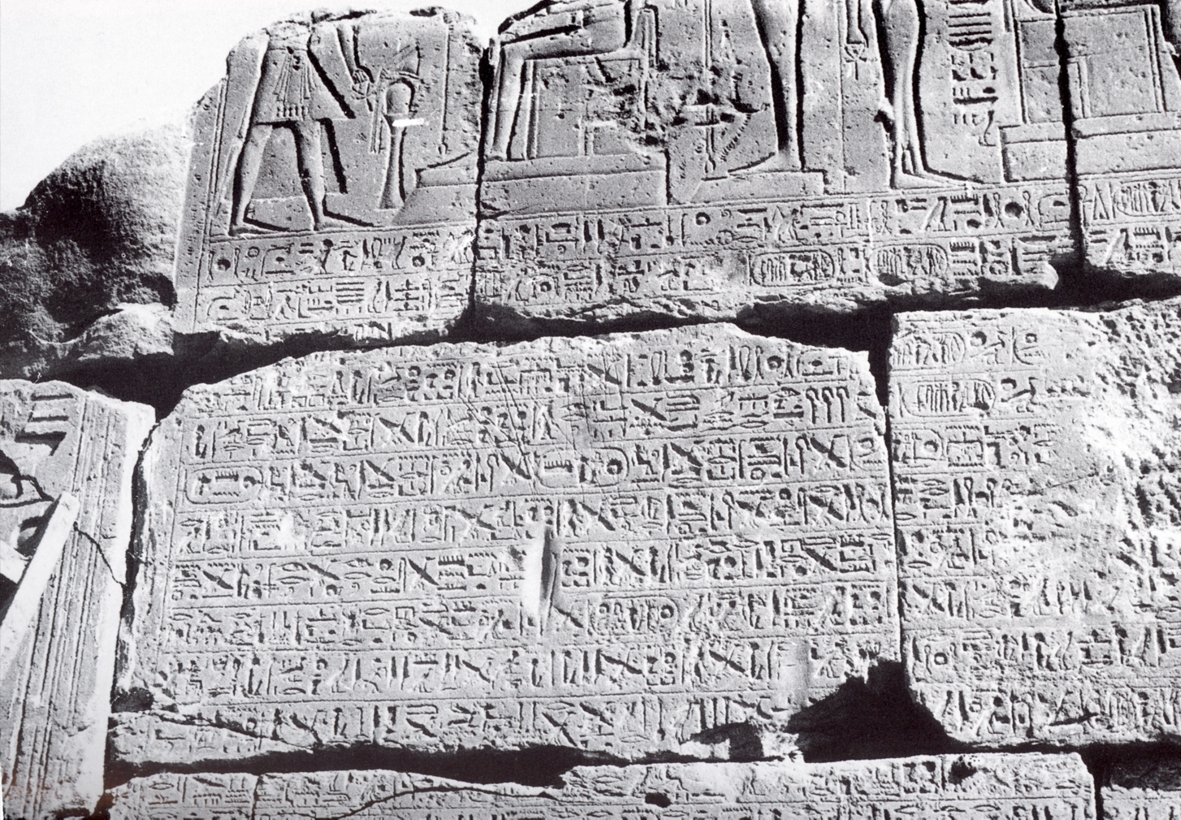
In 1822 François Champollion deciphered the Egyptian hieroglyphs. Among the texts studied soon afterward was a hieroglyphic inscription on the stone blocks of the temple of Karnak bearing the Egyptian version of the treaty between Pharaoh Ramses II (reigned 1279-1213 BC) and Hattušili, the “great ruler of Heta”. Other texts as well, some even older, also mention the land of Heta.
The Prism of Tiglath-pileser
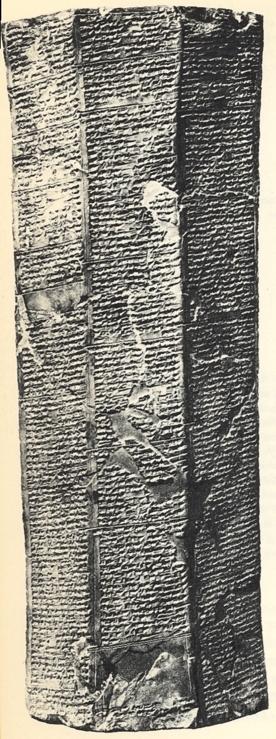
The general location of Heta became known to scholars in the early 1850s after Babylonian-Assyrian cuneiform had been deciphered sufficiently to understand the general contents of an inscription from around 1100 BC. This text spoke of a campaign of king Tiglath-pileser against the land of Ḫatti. Since its capital city was Carchemish, which was known from the Bible and was located on the river Euphrates in northern Syria, it was clear that Heta or Ḫatti should be sought there.
The “Hama Stones”
Bereits Already in 1812, the Swiss explorer Johann Ludwig Burkhardt had seen and described the stones from the middle Syrian city of Hama which were inscribed with hieroglyphic signs. These signs’ appearance, however, was completely different from that of the Egyptian hieroglyphs. In addition to the “Hama stones” several other similar inscriptions also became known after 1870.
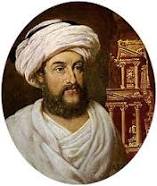
At the initiative of a British missionary living in Damascus, the Osmanian governor of Syria allowed the original stones to be brought to the Archaeological Museum in Istanbul, where they still remain today. Beforehand, however, castings were made which were then brought to England and thus were rapidly made available to scholarly research.
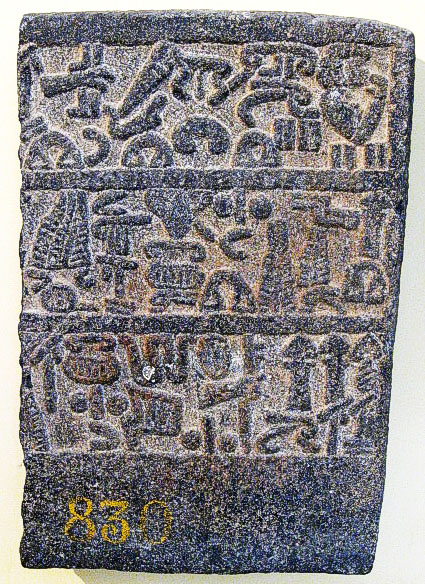
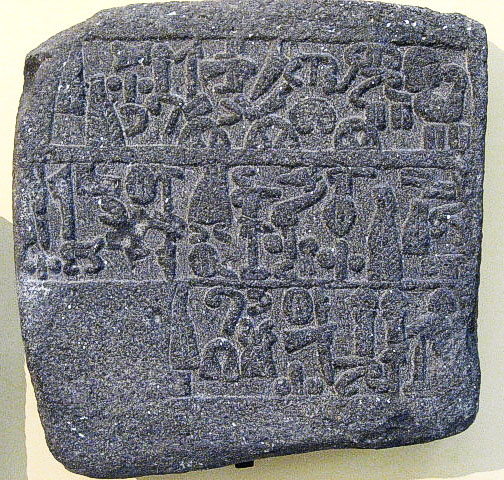
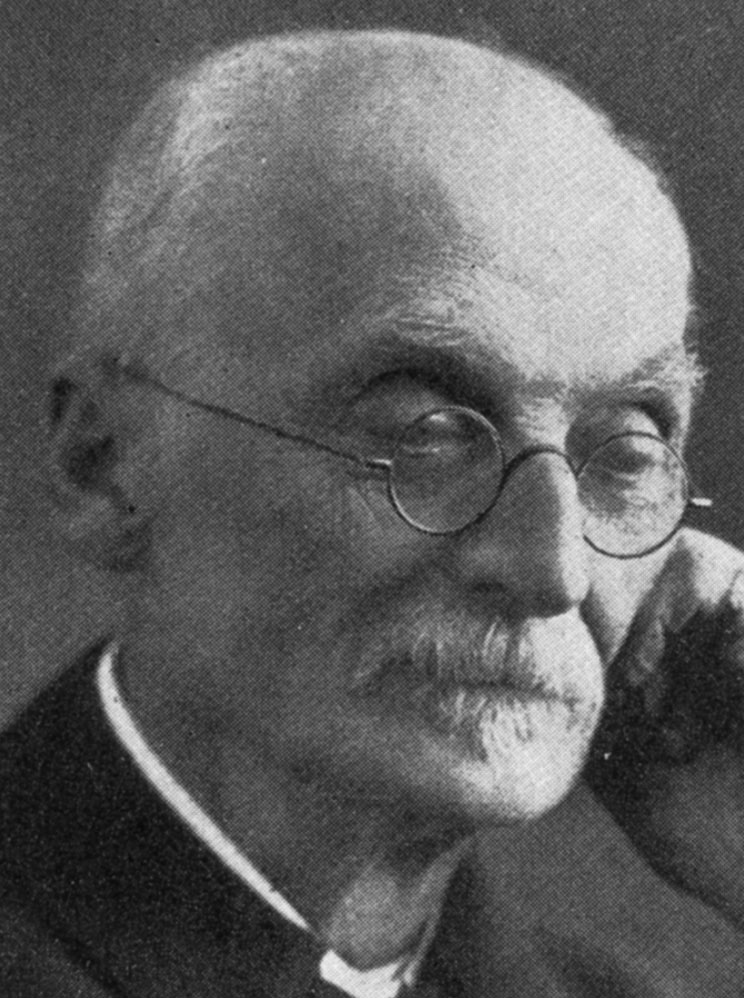
Some years later in 1867 the English scholar Archibald Henry Sayce identified a correlation between the “Hama stones” and the land Heta-Ḫatti, by which the localization of this land in Syria was apparently confirmed.
It remains an irony of the history of research that – as the example of the Karabel relief demonstrates – although the monumental remains of the Hittite culture in Anatolia had long been known at the time, they had not yet been recognized as Hittite. Apart from the Karabel relief, explorers in the first half of the 19th century had discovered numerous stone reliefs with unfamiliar archaic art.
Charles Texier visits Boğazköy
The French traveller Charles Texier (1802-1871) had already visited the ruins of the Hittite capital city of Hattuša near the small village of Boğazköy 160 km east of Ankara in 1834 and published these five years later in a monumental work.
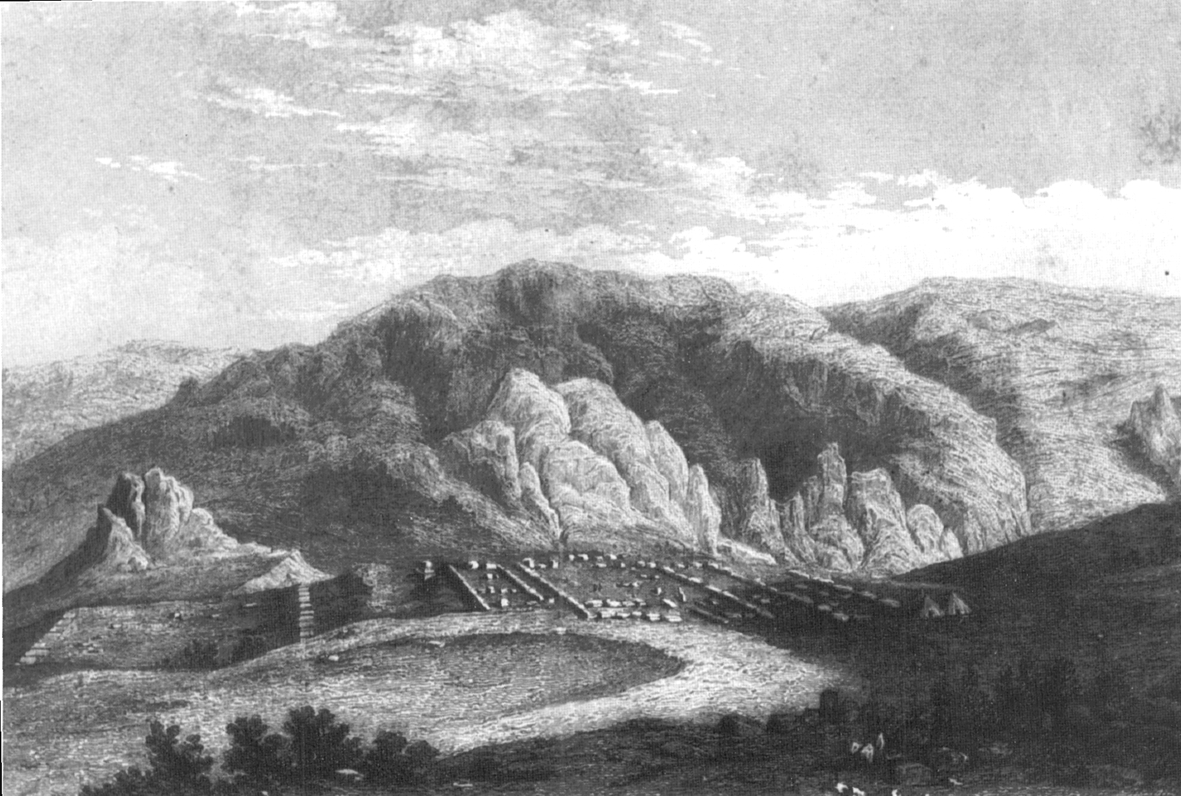
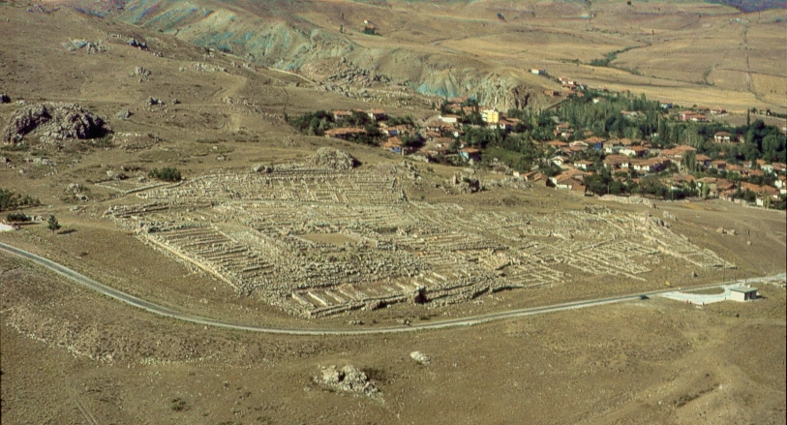
In Texier’s opinion, he had rediscovered the city of Tavium which according to Pliny and Strabo was the capital city of the Galatian tribe of the Trocmi to be sought in central Anatolia. Later he preferred an identification with the city of Pteria mentioned by Herodotus.
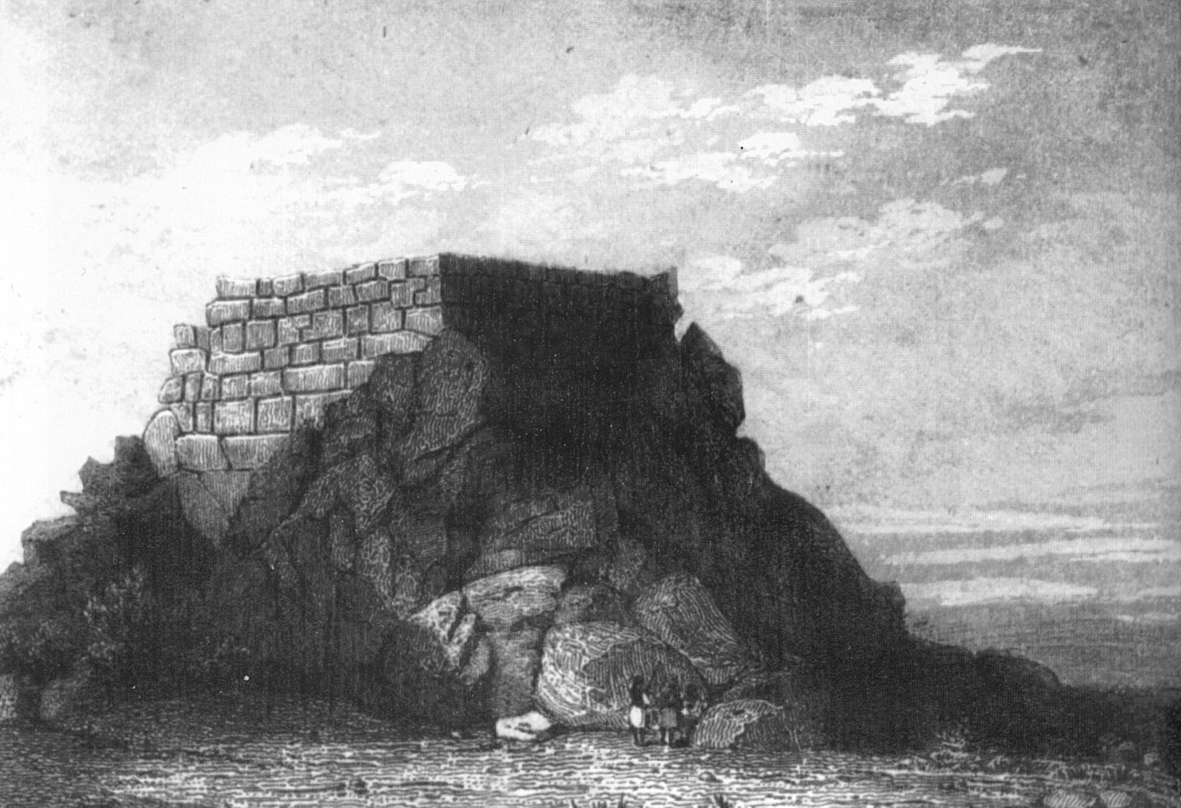
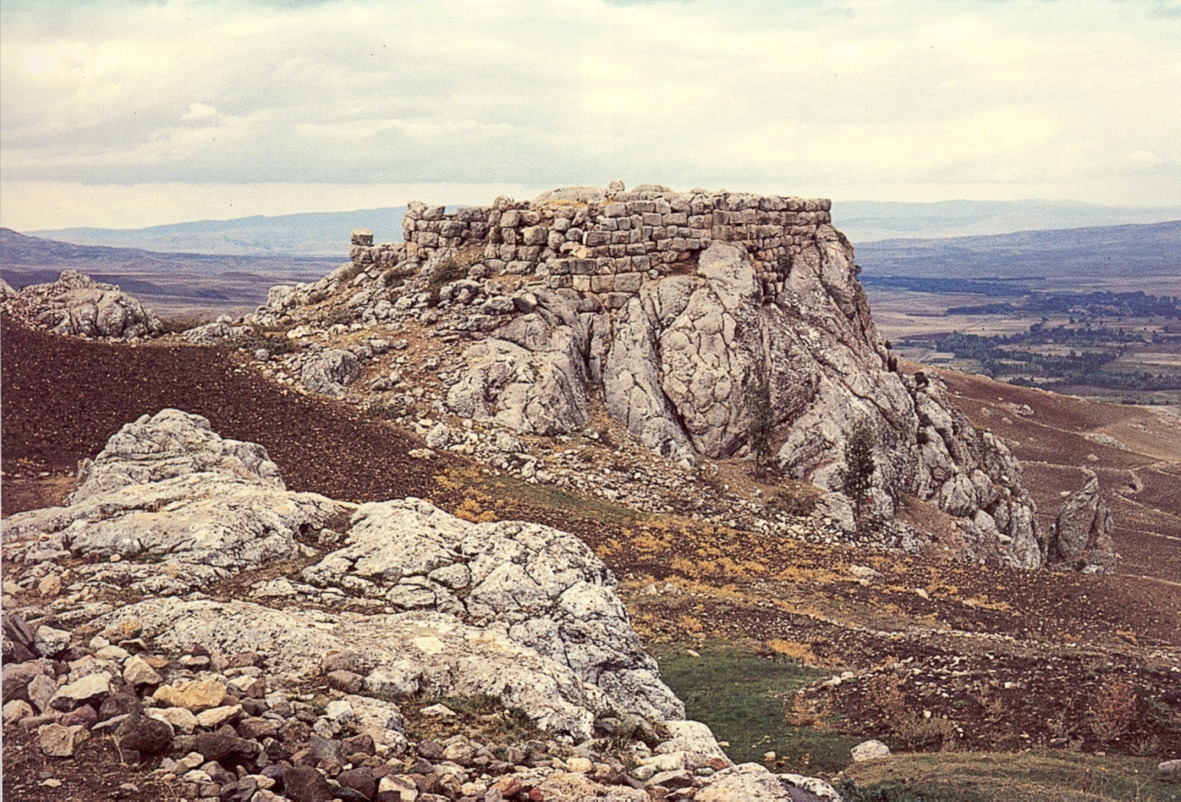
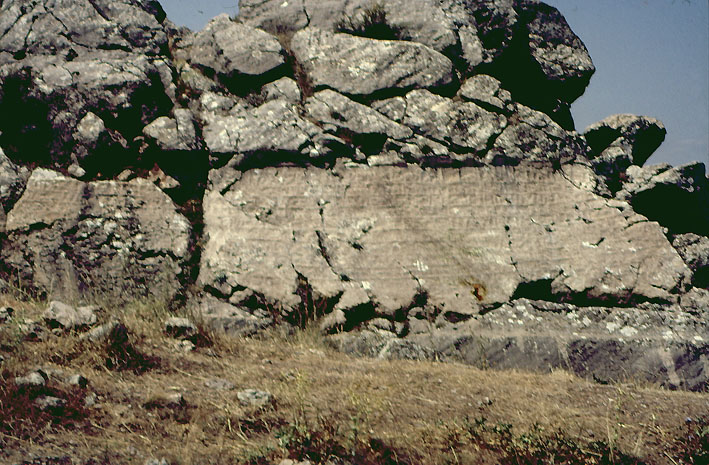
In the city ruins directly beside Boğazköy itself, a weathered inscription in a foreign script was visible which the local population referred to as Nişantaş, “sign cliff”. The system of signs used in this inscription is known today as Hittite hieroglyphs.
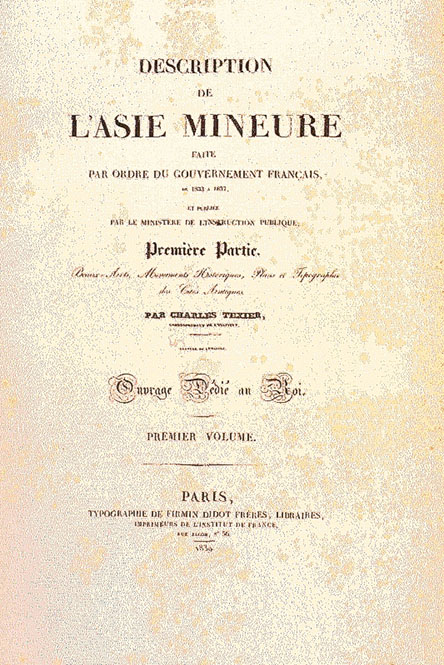
Signs of the same writing system were also visible in a nearby group of stone cliffs which the Turkish population called Yazılıkaya, “inscribed cliff”, which also featured a number of curious figurative representations.
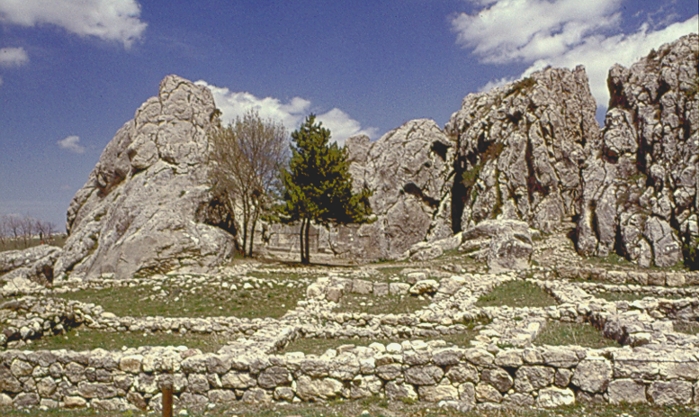
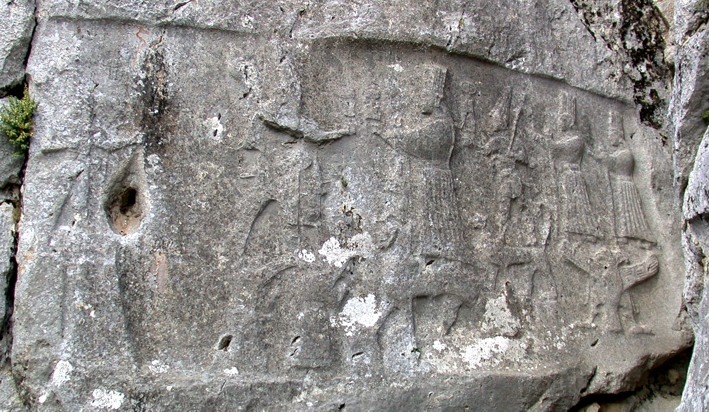
Texier visited and documented this location as well, however, since he was influenced by classical art, he had difficulties in producing adequate illustrations of them.
George Hamilton Discovers the Sphinx Gate at Höyük
Close to Boğazköy and beside the village Höyük, today known as Alaca Höyük, an above-ground gate complex with massive sphinxes was visible. This location was discovered in 1835 by the English traveller, George Hamilton. (At the time, storks regularly nested upon one of the monolithic sphinxes, as a painting from the 19th century shows.)
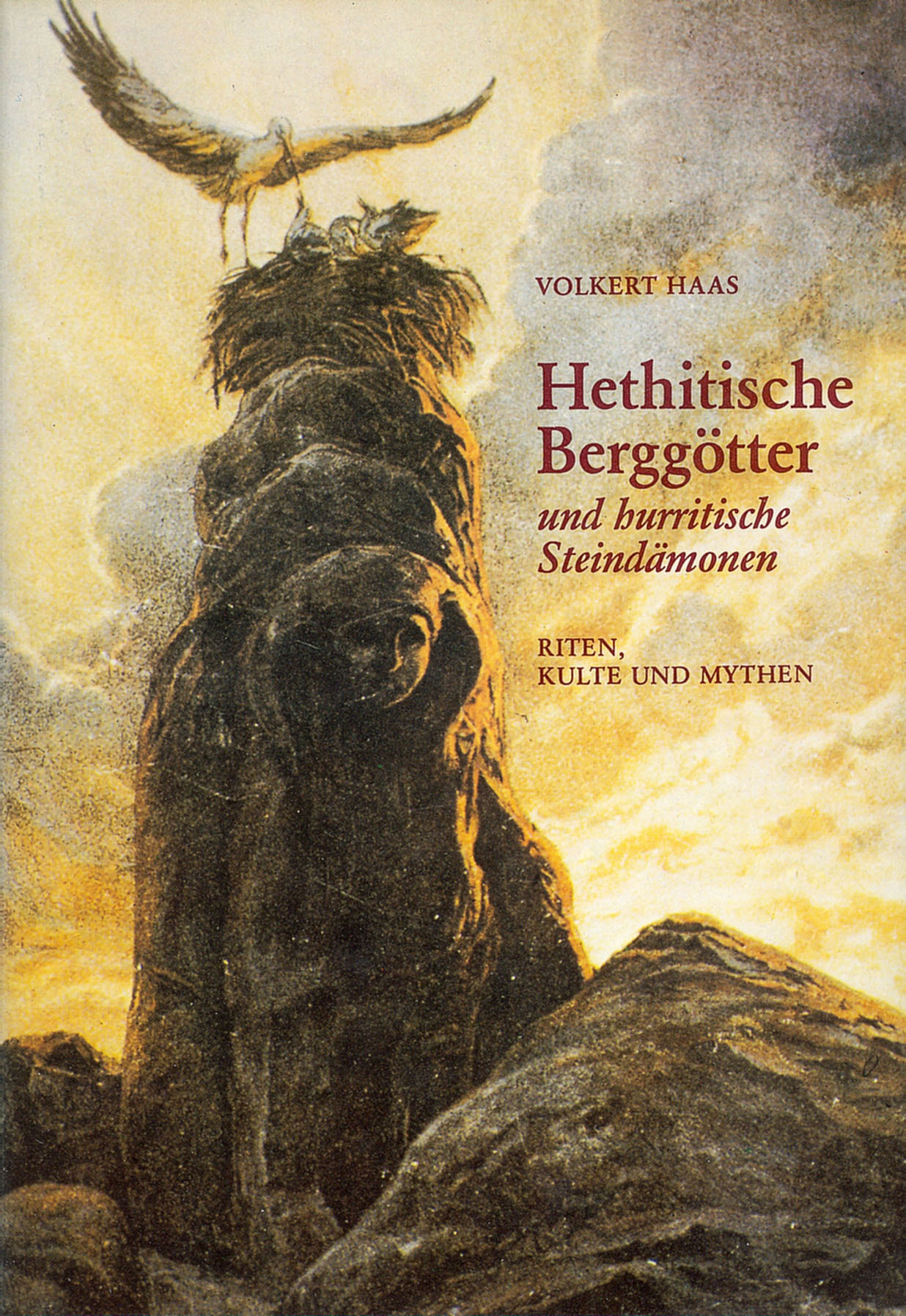
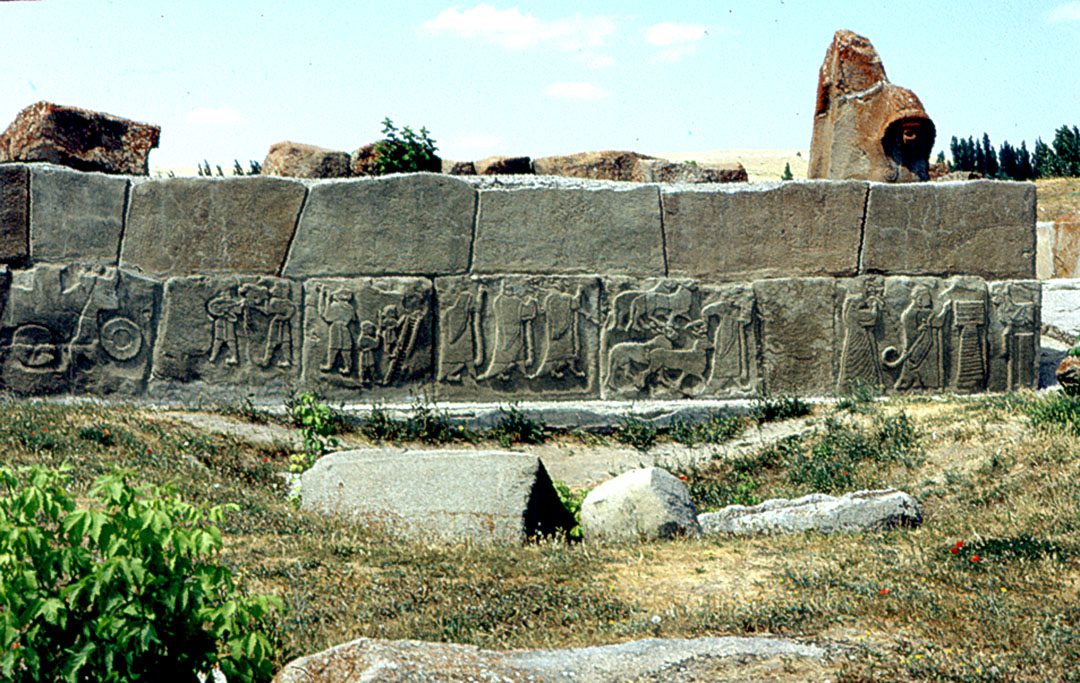
The Stone Relief of Ivriz
The early travellers encountered reliefs in various parts of the land, some of which also contained the signs of the same (at the time) undeciphered writing system, thus the stone relief by Ivriz – the most stunning and largest in Anatolia. The Osmanian scholar Kâtib Çelebi, also known as Haci Halfa (1609-1657) already made reference to this relief in the 17th century. From 1839 on it was often visited by European travellers as well.
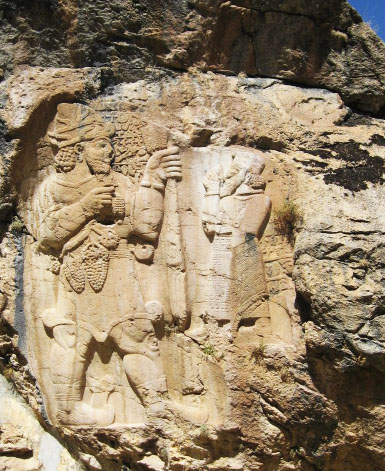
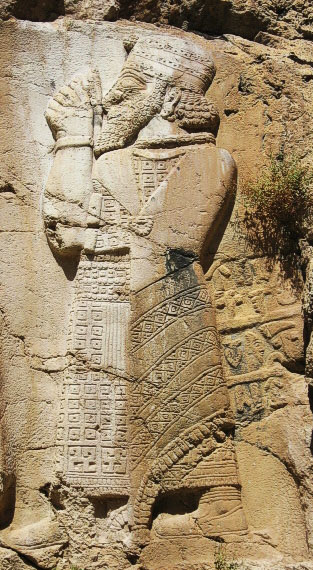
Numerous monuments which stemmed from early at least pre-Hellenistic times, including those with inscriptions, were already known in Anatolia in the first half of the 19th century. A correlation with the Ḥittîm – the Hittites – of the Bible or the Hēta of the Egyptian sources was not identified until 1879 when these were instead located in Syria as mentioned above.
The Turning Point: Hatti did not lie in Syria, but in Anatolia!
A traveling British scholar, Edwin John Davis, noticed the similarity of the written signs alongside both figures of the relief at Ivriz with the signs of the Hama stones. He published this observation in an article in 1876 – the same year in which Sayce made the connection between the Hama stones and the land of Heta / Ḫatti.
Sayce went on to observe that these hieroglyphic signs are also attested elsewhere in Anatolia, on the Karabel relief for example, to which he turned his attention in 1879. In another lecture in 1880, he made the important conclusion that the core area of the Hittite empire lay not in Syria, but rather in Anatolia. The French archaeologist Georges Perrot (1832-1914) reached the same conclusion almost simultaneously.
The Evidence of the Amarna Letters
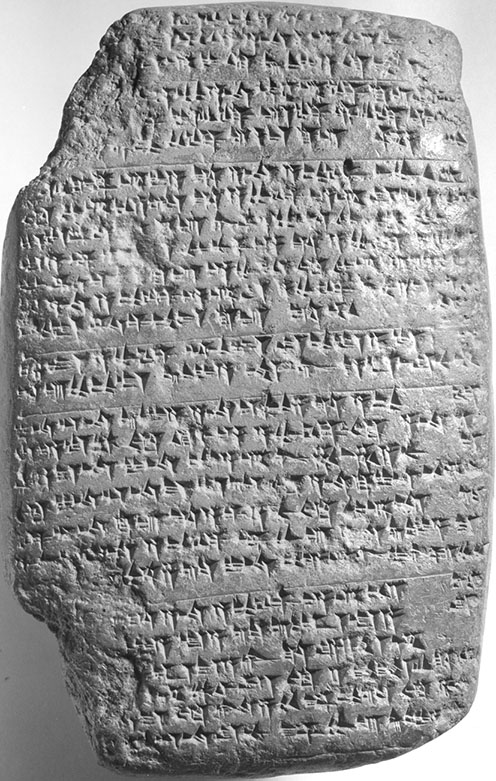
Confirmation for this conclusion was provided by a discovery made by a peasant woman in Middle Egypt in 1887 while digging for clay bricks in the ruins by Amarna. What she found quickly reached Berlin and London by way of the antiquities market: It was a portion of the pharaonic state archives from the 14th century BC, written in Mesopotamian cuneiform and in the Babylonian language. The writing and the language had been increasingly understood since the middle of the 19th century, so that the Amarna letters could be read immediately after their discovery.
The letters proved beyond any doubt that during the Amarna Age the centre of the Hittite empire was located in Anatolia and not in Syria, that is, during the time of the Pharaoh Amenophis IV, and that the Hittites conquered Syria in the same period in which these letters were composed.
The Solution to the Riddle Lies in Boğazköy
Attention was focused upon the extensive city ruins by Boğazköy, 160 km east of Ankara. Sayce attempted to motivate the excavator of Troy, Heinrich Schliemann, to dig in Boğazköy, but this, as is well known, was to no avail.

Carl Humann, originally a railroad engineer who then turned his attention toward archaeology and is well known for discovering and securing the reliefs from the Pergamon Altar, surveyed the ruins in 1882 and produced castings of the reliefs of the sanctuary at Yazılıkaya which can be seen today in the Vorderasiatisches Museum in Berlin.
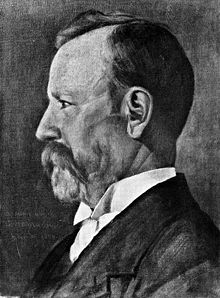
In the 1880s, various scholars (William Ramsay, Georges Perrot) expressed the opinion that the ruins by Boğazköy could well be the capital city of the Hittites. Humann, in contrast, followed the older view that identified the ruins with Pteria.
Plans for excavations by the British and the Germans remained for a time unrealized.
First Excavations
The first excavations in Boğazköy were led by Ernest Chantre, vice director of the museum in Lyon, and were carried out in 1893 and 1894 under the commission of the French ministry of culture. They were, however, ill-fated since a cholera outbreak in central Anatolia and the accusation of favouring the Armenians, who at the time were considered by the Turks to be a source of agitation, put an end to the undertaking.
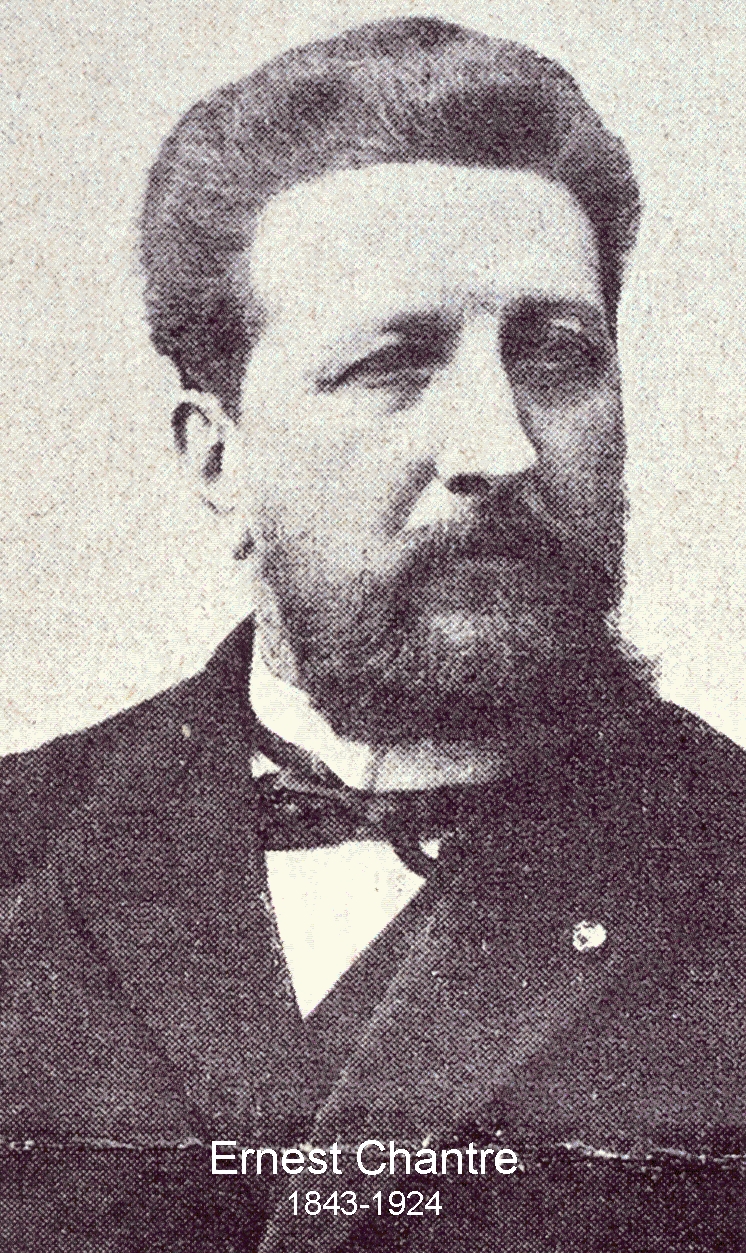
Of importance for an evaluation of the significance of the ruins was the discovery by Chantre’s expedition of some fragments of clay tablets which were written in an unknown language. Thus, the key to the Hittite problem lay at this site.
German and English Attempts at a License to Excavate
Unaware of the French endeavours, plans were already being made in Berlin for undertakings in Boğazköy, which, however, came to naught because of the diplomatic circumstances aroused by the turbulent political situation in Turkey.
During the first years of the new century, competition for the approval of an excavation in Boğazköy emerged between the British and the Germans.
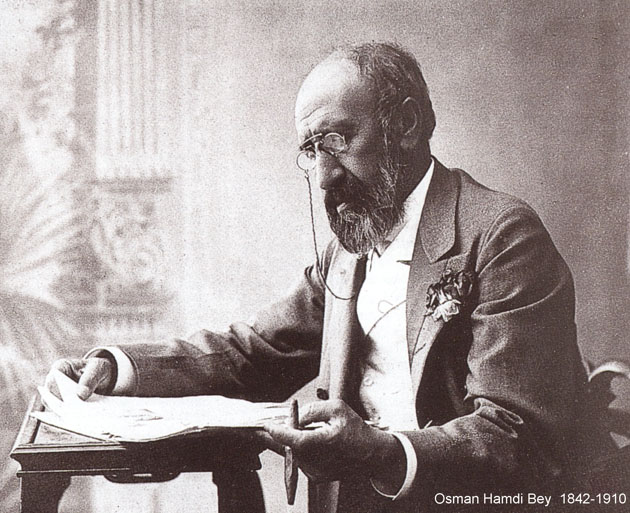
During this time, the highly respected director of the Imperial Ottoman Museum in Istanbul, Osman Hamdi Bey, played an important role. He stemmed from the Osmanian elite, his father had been the ambassador to France and the grand vizier, i.e., minister president, and he himself had spent twelve years in France where he studied art and jurisprudence.
He successfully proposed a strict new law which in principle forebode the export of antiquities, but he went about the matter very pragmatically by reaching agreements to divide up finds in order to attract well-financed and competent excavations to the land.
Hugo Winckler and Theodor Makridi
In 1905, the license for Boğazköy finally went to a German Assyriologist, Hugo Winckler, a decision which bore long-term consequences: Even today the German Archaeological Institute is present on site, and the field of Hittitology, which grew out of the study of the text finds, remains well represented at teaching and research institutes in Germany. In other countries as well, Hittitology has long been a subject of instruction and research.
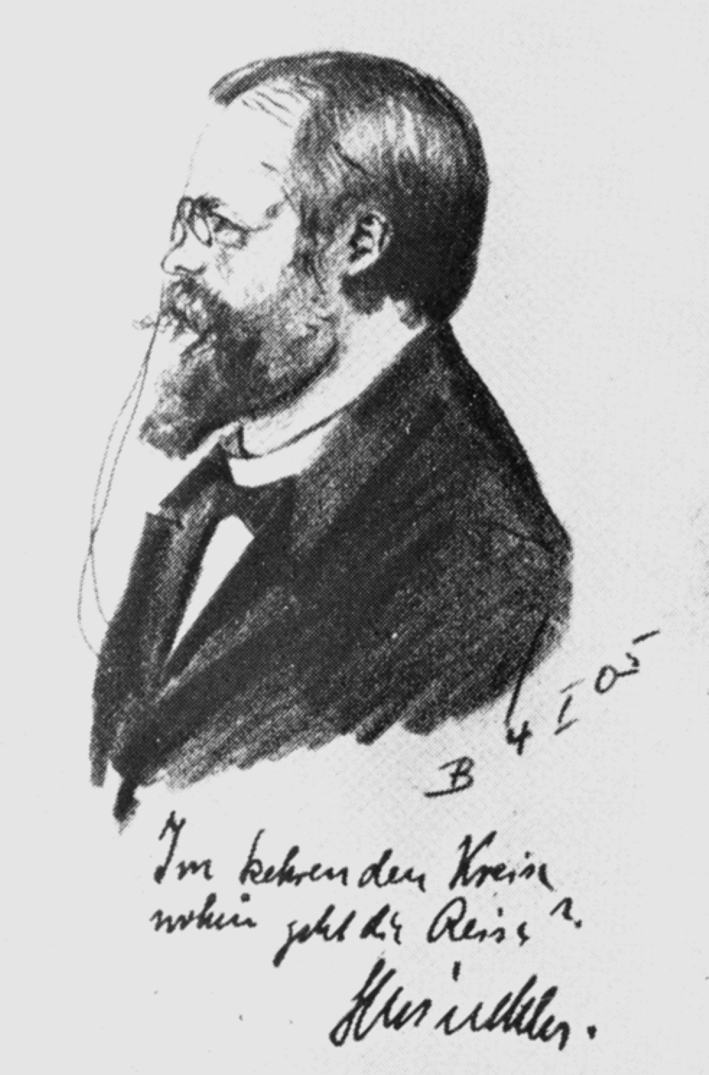
Hugo Winckler, born 1863 in the Prussian provincial town of Gräfenhainichen near Halle, studied oriental philology but especially the discipline of Assyriology which was burgeoning at the time. Despite the fact that he published several foundational text editions as well as a ‘History of Babylonia and Assyria’ and was considered one of the most productive Assyriologists of his time, he never attained a position as professor, but in 1904 nonetheless was given the title of “außeretatmäßiger außerordentlicher Professor”. His lack of academic success can most likely be attributed to his difficult personality but also his hypotheses about ‘Sternenglaube’ and ‘Panbabylonianism’.
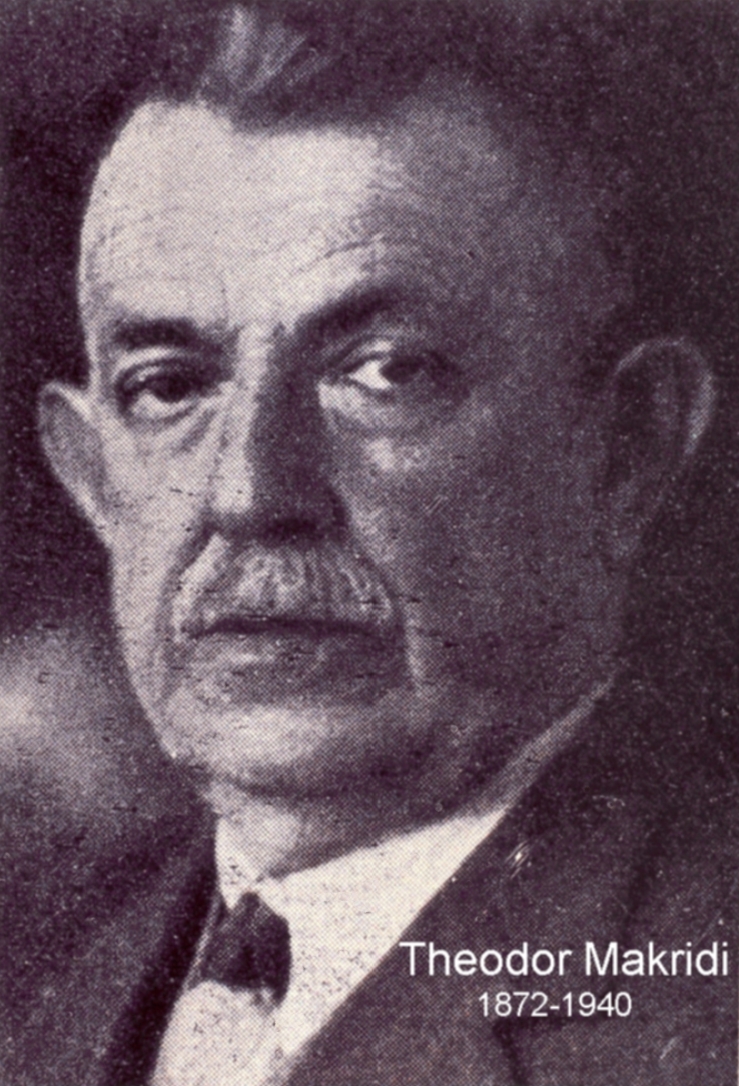
The permission to excavate in Boğazköy was achieved through a friend who was also an official of the Antiquities Museum in Istanbul, Theodor Makridi, whom Winckler met some years before during excavations in Sidon/Lebanon. Officially, the excavation was an undertaking of the Archaeological Museum in Istanbul, to which the finds were consequently also given.
Discovery of Clay Tablets and Archaeological Research
After a three-day visit and test excavation in the fall of 1905 by which 35 fragments of clay tablets were salvaged, the first regular archaeological campaign occurred in 1906. The excavation was carried out in the same location where Chantre had already discovered cuneiform tablets, namely on the hillside of the royal residence, referred to in Turkish as Büyükkale, ‘great castle’. The most important and also most surprising find was the Babylonian version of the peace and goodwill treaty with Egypt, which had already long been known in its Egyptian hieroglyphic version. Thus it was finally proven beyond doubt that this site was indeed the capital of the Hittite empire.
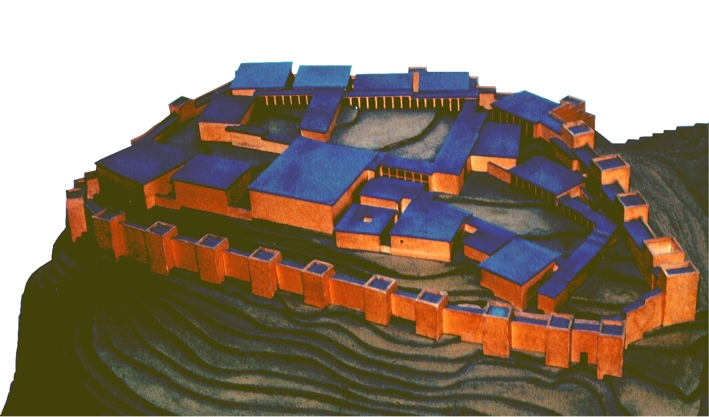
Later, Winckler wrote a lively and worthwhile report of the stays in Boğazköy in 1905 and 1906. It remained unfinished and was published posthumously under the title „Nach Boghasköi!“.
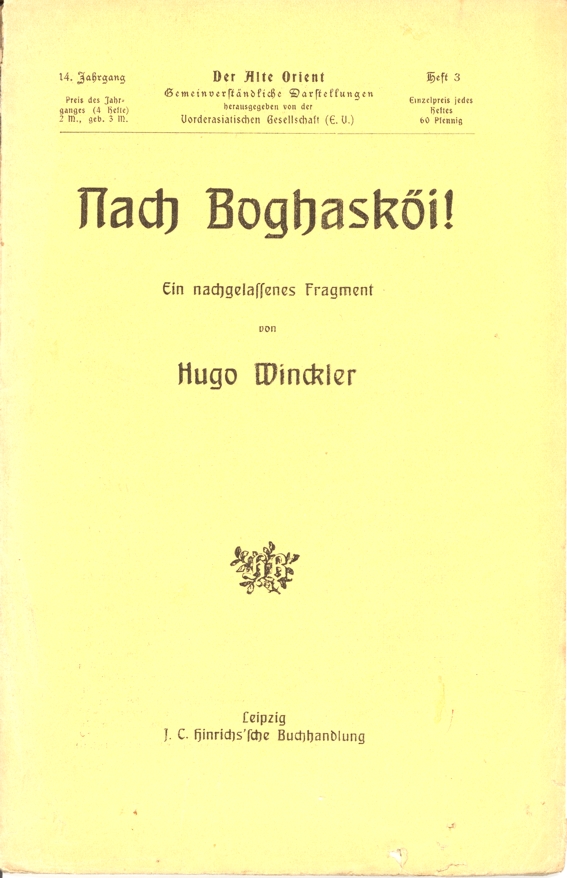
Winckler and Makridi’s second campaign in Boğazköy, 1907, was financed by the great philanthropist James Simon of Berlin through the German Orient Society; parallel to this, the German Archaeological Institute carried out surveys and excavations. Even at that time, Makridi’s excavation methods and documentation were fully inadequate, however Winckler, who as a philologist was only interested in the text finds and not their archaeological context, could be very satisfied: The results of these two campaigns were overwhelming; thousands of clay tablets and fragments of tablets were discovered in the magazines of the Great Temple, most of them written in the yet unintelligible Hittite language, but several in Babylonian which had long been deciphered and which served as the language of diplomacy in the 2nd millennium BC. Based on the Babylonian texts – among them, state treaties and letters – Winckler, already in 1907, was able to produce a sketch of Hittite history which more or less correctly reconstructed the sequence of Hittite great kings in the late 14th and the 13th centuries BC.
Interruption and Preliminary End of the Excavations
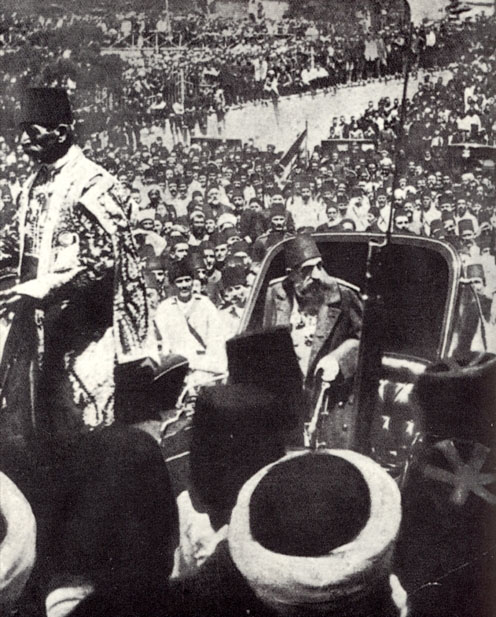
In 1908, a crisis year for the Osmanian Empire, no further excavations took place. Sultan Abdulhamid II, whose authoritarian rule utilized police state tactics, was forced by the “young Turks” to abdicate the throne and interned in Thessalonica.
This was problematic for German interests, since the German Empire had improved its diplomatic position by means of the personal relationship between the sultan and the emperor – manifested not only in railroad construction but also in archaeological excavations.
In light of the spectacular finds of the 1907 excavation, archaeologists from diverse countries – Great Britain, the USA and France – made concerted efforts to obtain the license to excavate in Boğazköy. Nevertheless, these efforts remained fruitless. Winckler was able to dig two more times in Boğazköy before his death in 1913. The outbreak of World War I and its effects would prevent continuation of the work for a substantial period of time.
Bedřich Hrozný Deciphers the Hittite Language
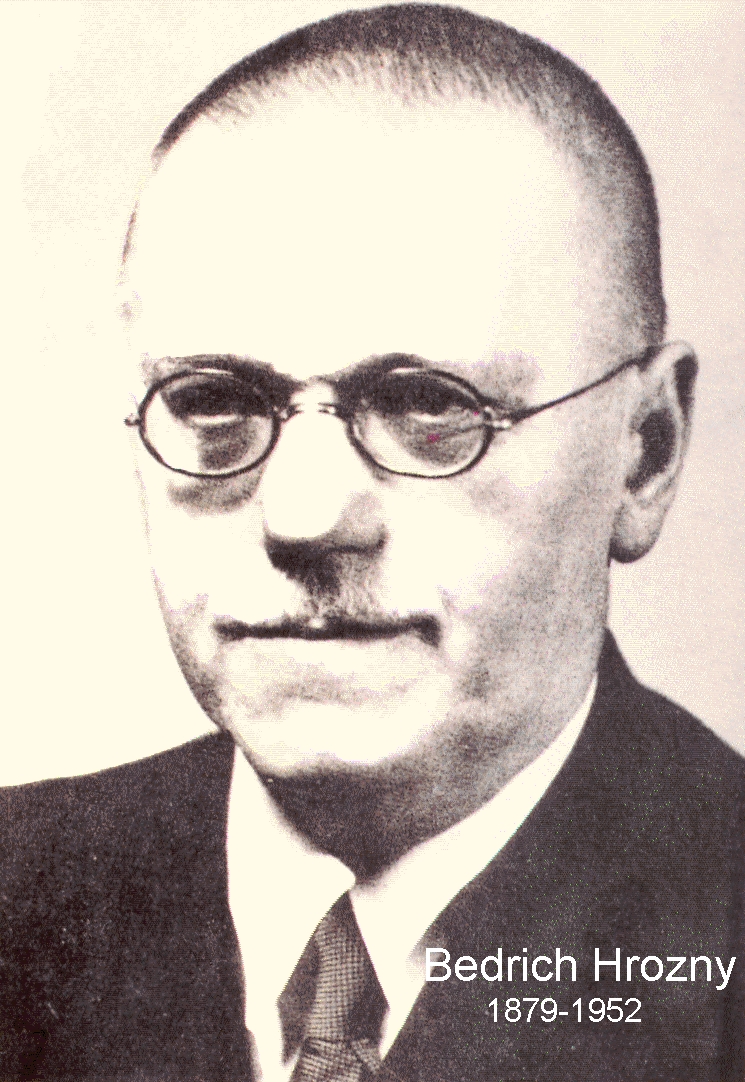
The Hittite texts, in contrast to the Babylonian, remained unintelligible to Winckler, but shortly after his death a breakthrough was made by the Czech scholar Bedřich Hrozný, professor in Vienna until the end of World War I, then in Prague. In what has become a famous article in the Mitteilungen der Deutschen Orient-Gesellschaft from 1915, he was able to present evidence that Hittite belonged to the Indo-European family of languages, that is, the widespread group of languages to which Greek, Latin, the Indo-Iranian, Celtic, Germanic and Slavic languages, among others, belong.
In his studies of the Hittite tablets, Hrozný observed that numerous words possessed endings which corresponded to those well known in the Indo-European languages. He demonstrated other lexical correspondences as well, including wātar “water” with Old Saxon watar, ug “I” with Latin ego , kuis “who” with Latin quis.
As confirmation, Hrozný cited a sentence from an instruction for temple servants which can be considered the first fully understood sentence of Hittitology:

The logogram (transcribed in capitals) was already known from Mesopotamian cuneiform: NINDA = ‘bread’. Therefore it could be surmised that watar (written syllabically) was to be identified with ‘water’. Both forms ending with -teni were comparable to the Old Indian and Greek verb endings of the 2nd person plural present (Greek -te, Old Indian -thana- ), and a comparison of the resulting verbal stems ezz(a)- and ek- with Latin edere „eat“ respectively aqua “water” was apparent.
Hrozný’s foundational discovery marked the turning point from fumbling attempts at understanding the Hittites as an historical factor in the ancient Near East, to a veritable old-philological discipline. The study of the Hittite texts progressed rashly in the following years. Only a decade later, philologists were in a position to produce editions of Hittite texts, especially of an historical nature, which remain valuable even today. In the meantime, dictionaries, grammars and text editions as well as an ever-increasing amount of scholarly literature consisting of thousands of works are now at the disposal of the discipline of Hittitology.
© Gernot Wilhelm 2013
